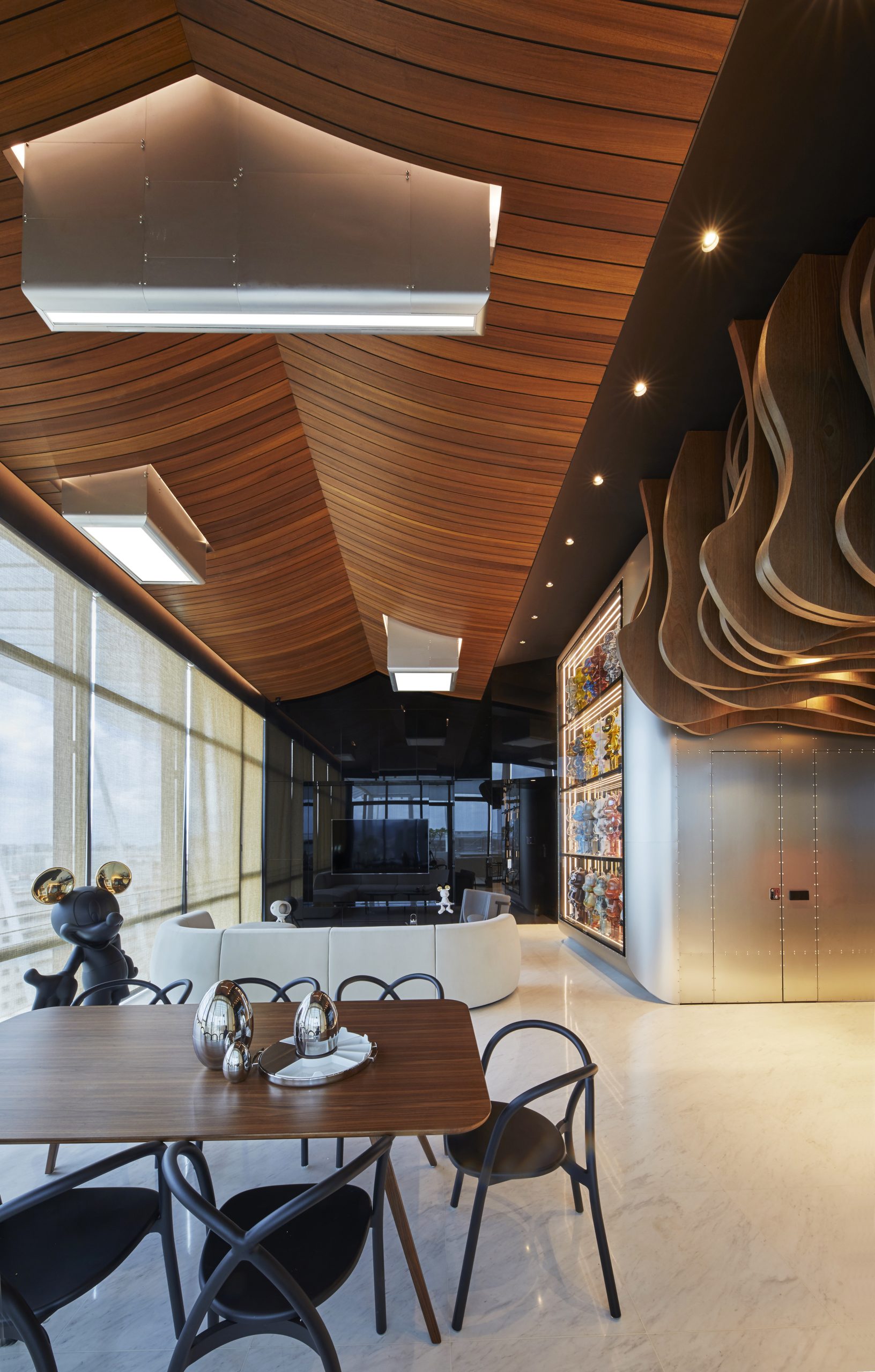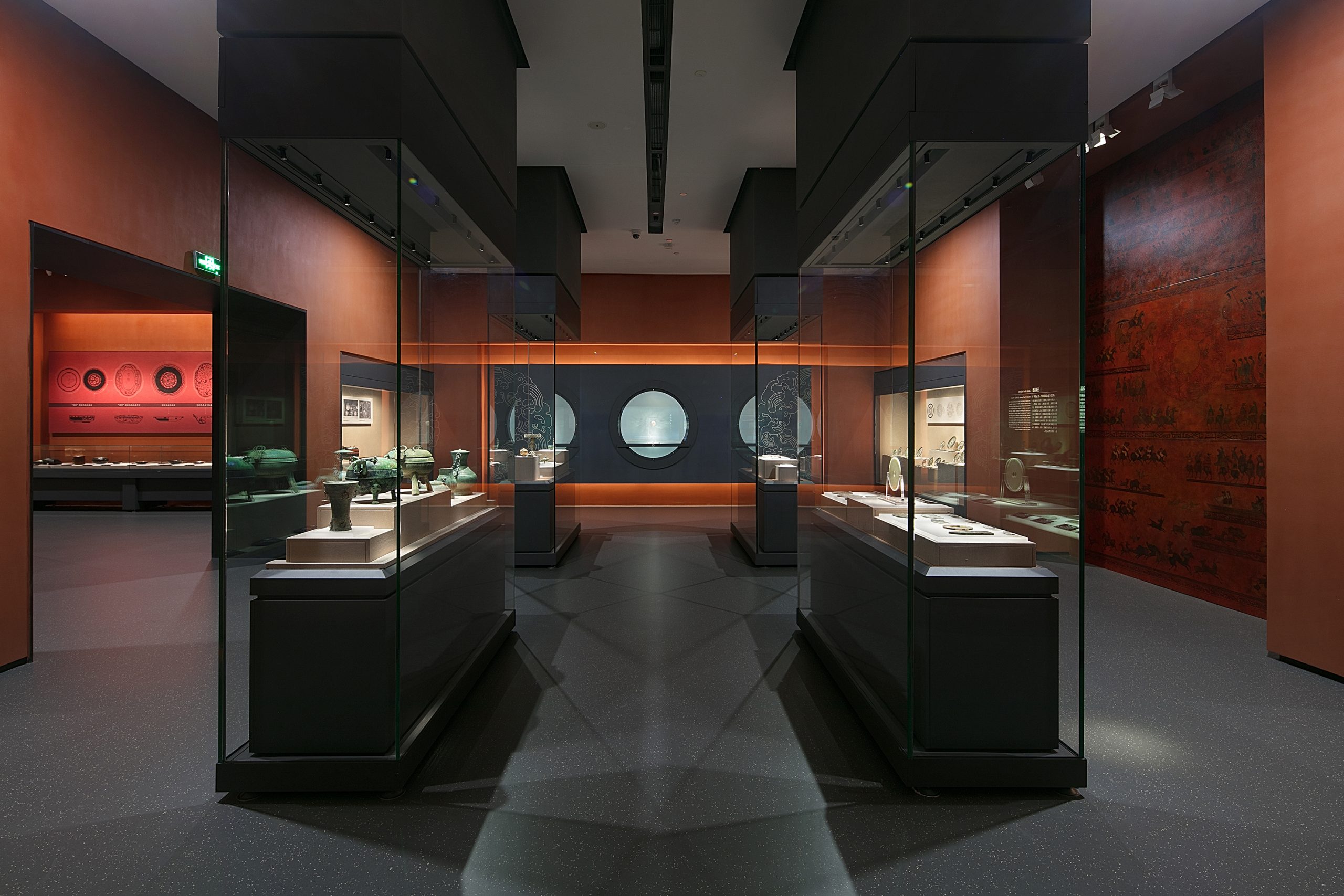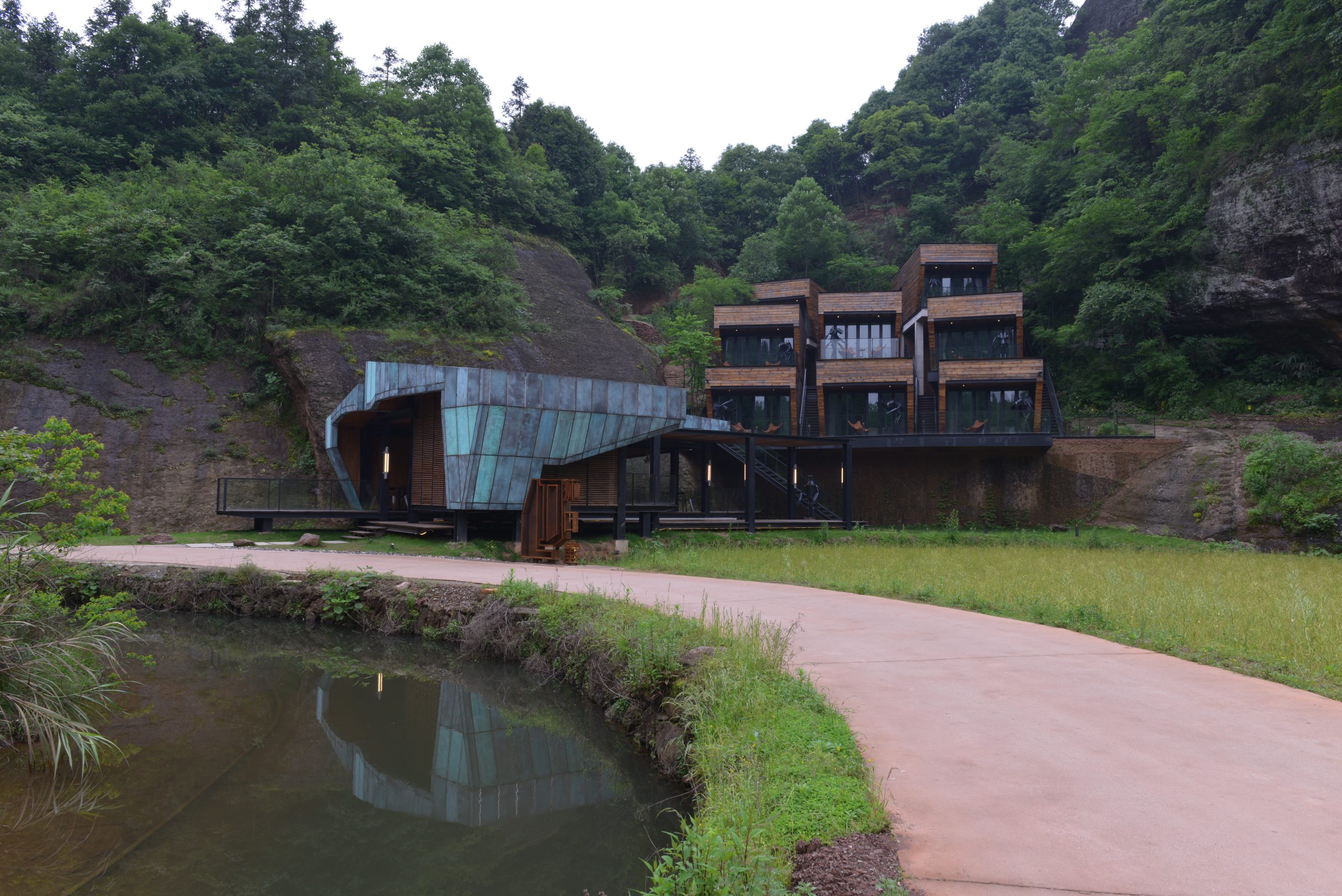An architect by training, Keat Ong is the creative director of Keat Ong Design, a multidisciplinary consultancy specialising in interior and product design. He is also the president of the Society of Interior Designers Singapore (SIDS) and the newly-appointed president of the Asia-Pacific Space Designers Association (APSDA). An award-winning designer in Asia, Keat Ong was named Asia’s Top Designers in Singapore Design Awards 2014 and Designers of the Year 2016/2017 from INTERIOR DESIGN magazine.
What made you pursue architecture and how has your career evolved over the years?
I have always enjoyed doodling since young. I was formally trained in painting under Singaporean artist Leo Hee Tong during my school days. In my earlier years, I recall struggling to make a decision on my university course. When I was serving my national service, I found myself torn between architecture and archeology – the latter because I watched way too many action movies including Indiana Jones. Finally, I decided on architecture as I had the impression it is the most prestigious course related to what I enjoyed doing and excelled in – drawing.
After my graduation, I was fortunate to have worked for 2 prominent Singapore architectural practices, Look Architects and aKTa-rchitects, respectively before starting Nota Design at the age of 28. When we just started out, we dealt with a lot of smaller residential and retail interior design projects, where architectural knowledge really came in handy. Given my background in architecture, I tend to “create” more than I would “adapt” to the projects that I am given, but inherently, getting the right balance is essential.
In retrospect, I realised my thinking process in design has evolved over time. My constant urge to do architecture, coupled with the interior projects I was commissioned to do has resulted in me pursuing architecture within my interior projects.
- Yunan Huidu Hotel MPH, China
- Tembusu Penthouse, Singapore
How would you describe your design style?
I have not deliberately created any particular style per se in all the projects I have completed so far. I have always believed that the design process is both investigative and exploratory. Both are intrinsically different as the former refers to the thorough facts-finding work we have to do on any given project to understand the existing background such as geographical, cultural and so on. Thus, investigative or detective work requires a designer to be precise and subjective. This differs from the exploratory work which a good designer executes when it comes to the creation of forms and spaces. Unlike a detective, an explorer sets out to discover new frontiers with no idea what will eventually be found. Well, that to me is the fun part of the design process! Figuratively speaking, I believe that a good design requires both the head and heart of the designer.
Therefore, I have to admit that there is certain subliminal continuity of particular elements in all of my projects but I’m not apologetic about it as these are things that I love and define me as a designer and an individual. You may refer to this as my design DNA but I do not have a fancy name for it. I am happy to leave the judgement and observation of my work to the end-users and visitors of the spaces and objects I have created.
You are an award-winning designer with many projects in China. You are also the first foreigner in China to become the Honorary President for a few high-level industry bodies. In your opinion, what have you done differently to stand out in a large market like China?
First and foremost, I must establish the fact that design work and design business are two different monsters altogether. In any given market, foreigners are always perceived to contribute differently to add value to the existing ecosystem. The expectation and anticipation are always there for us to be somewhat different.
It all started way back in the year 2005 when we were doing mostly local and regional work in Singapore when our then partner saw our featured project in a magazine. Turned out they were from a Chinese design firm on a hunt for overseas partners to strengthen their image back in China. We started collaborating on some projects and eventually formed a design group before we subsequently decided it was time to go our separate ways due to differences in business philosophy and direction.
I must say I was fortunate to have ventured into the Chinese market at a time where opportunities were still vast, with first-tier Chinese cities like Beijing, Shanghai, Guangzhou and Shenzhen being very competitive, while second- and third-tier cities and towns played catch up with larger volume of projects, and hence, comparatively lesser competition. It then boils down to who you know and a stroke of luck to enter China’s market.
In business, I am a strong believer in reciprocal actions. When you take something, you have to give something back. I was approached by many design associations, media and organisations in various Chinese cities to contribute in different ways, including speaking engagements, strategic advisory, editorial involvements, awards creation and so on. Over the years, deep trusts and friendships were forged through consistency and sincerity.
In relation to design work, we are also very fortunate to have found clients who strongly believe in our design philosophy and capability. These opportunities helped us to accumulate a diverse and interesting portfolio, ranging from institutional, hospitality, commercial and residential spaces. As a designer, it is certainly very fulfilling to work in a vibrant and growing Chinese market.
- Changsha Museum, China
- Changsha Museum, China
What advice do you have for designers who are trying to grow their influence overseas?
Understanding the business culture and social context is paramount in any new environment. Back then, a black and white, go-by-the-book western mentality will not work in China, at least from my experience. Everyone was hungry for business back then and extremely hardworking at the same time! There are ample opportunities, but with it, increasing competition to match.
One has to adapt to how business is conducted in an overseas market. For instance, in China, dinner is not simply a meal, but an opportunity for your potential client to understand you and build trust. It is also worth mentioning that some of my projects commenced without a proper piece of paper signed, although not advisable. Thus, trust is key to building many meaningful business relationships in China.
Another important aspect to growing one’s influence in a certain place is to be there physically – something I have learnt the hard way! Despite living in the internet age, not everything can be controlled remotely. Human interactions with clients, teams and partners as well as the human touch to projects are priceless and irreplaceable. In this pandemic, we have learnt to make adjustments and compromise, but I believe that this is only a transient phase.
You are currently the president of SIDS and the newly-appointed president of the Asia-Pacific Space Designers Association (APSDA). What is your vision for the design scene in Singapore and the region?
I am very fortunate to have received the support and trust of the interior design fraternity in Singapore to put me in the captain’s seat for 3 consecutive terms. With my trusty team, we are happy to know that our hard work has far-reaching impact on the industry. The latest industry game-changer is our Singapore Interior Design Accreditation Scheme (SIDAS) which sets out to elevate the interior design profession and upkeep the competency of our practitioners.
Although many Singapore designers are already making waves beyond local shores, my vision is for Singapore to be able to produce consistent pools of talented interior designers who are both equipped with aptitude and competency all at the same time.
At the regional level, APSDA is currently representing 12 nations/territories in Asia and Oceania and the numbers are increasing. I am honoured to assume this leadership role for the next 2 years to help put the largely underrated regional design prowess on the world map. There are many “crouching tigers” and “hidden dragons” in our region and APSDA will be on a mission to discover and promote these gems. My vision for the region is to unite the differences through better understanding and cooperation between the nations/territories to create a collaborative spirit amid the diversity, tapping on the strengths of each to make us stronger as a collective force.
- Lion’s Den Hotel, China
- Lion’s Den Hotel, China
Apart from your design works, you also contribute towards educating the next generation of designers as a visiting professors to many universities. What is your motivation for teaching and how do you balance your multiple roles?
The academic aspect of the profession is as important for existing practitioners as much as for the undergraduates. I have conducted lectures and masterclasses for practitioners in several universities including the prestigious China Academy of Art. Design discourse and research will always be a fundamental part of any successful designer across all disciplines. I feel teaching helps keep one on top of the game and on the verge of new developments. Most importantly, I enjoy the interactions as well as the occasional challenges from the students. As a designer, there is always something on my mind, such as the concepts or the details of the projects I am handling. Some of these puzzles were actually solved during classes when the adrenaline kicked in. At times, when the going gets tough, or when I feel jaded, teaching can be therapeutic when you feel the enthusiasm of the audience.
Time management wise, I am a full-time practitioner to start with and my projects are my first priority. All other engagements have to work around the former. Having said that, I am a nomadic worker as a lot of my work can be done on the move. Thus, before the pandemic, you can find me working on a design concept while I am en route to the next city for either a teaching engagement or an event. I am also blessed with fantastic staff and colleagues who are efficient and flexible enough to adapt and work around my hectic schedule. Therefore, there is no magic to how one can do so much. I always tell people that the secret is simply having good teams behind me. It is that simple.





